By Olivia Rosane and Cristen Hemingway Jaynes
There are five oceans and five first-place winners of the 11th annual Photo Competition for United Nations World Oceans Day (UN WOD). The winners were announced at the United Nations headquarters in New York City on Friday, June 7.
This year, each first-place photographer hailed from a different country, and they all captured unique moments of oceanic wonder, from the Northern Lights dancing over Norway to sardines rushing away from cormorants and pelicans off Baja, California.
“The Photo Competition for UN World Oceans Day is a free-and-open public competition that calls on photographers and artists from around the world to communicate the beauty of the ocean and the importance of the respective United Nations World Oceans Day theme each year,” the UN explained in a press release.
The theme for UN WOD 2024 is “Awaken New Depths,” and each of the winning photographs helps awaken new depths of appreciation for the ocean. A first-, second-, and third-place winner was selected for each of the five categories: Awaken New Depths, Underwater Seascapes, Small Island Developing States, Big and Small Underwater Faces, and Above Water Seascapes.
As they are every year, the winners were chosen by a panel of world-renowned judges. The 2024 judges were photographer and dive center operator Mohamed Rifshan Shaheem, DivePhotoGuide Managing Editor and Chief Operations Officer Ian Bongso-Seldrup, underwater photographer Tom St George, underwater photographer Mayumi Takeuchi-Ebbins, and cave instructor and explorer Julia Gugelmeier.
The contest was curated by freelance wildlife and underwater photographer Ellen Cuylaerts, while the announcement was moderated by Paul Walker Foundation Founder and President Meadow Walker.
The event was organized by the UN Division for Ocean Affairs and the Law of the Sea; DivePhotoGuide; Oceanic Global; the UN Department of Economic and Social Affairs; the UN Office of the High Representative for the Least Developed Countries, Landlocked Developing Countries and Small Island Developing States; the Intergovernmental Oceanographic Commission of UNESCO; and Nausicaá.
Now, let’s dive right into the winners of the 11th Annual Photo Competition for UN WOD 2024. You can also see the winning photos at www.unworldoceansday.org.
Awaken New Depths
First place: “Bringing Up the Net” by Renee Grinnell Capozzola, USA, @rcapozzola
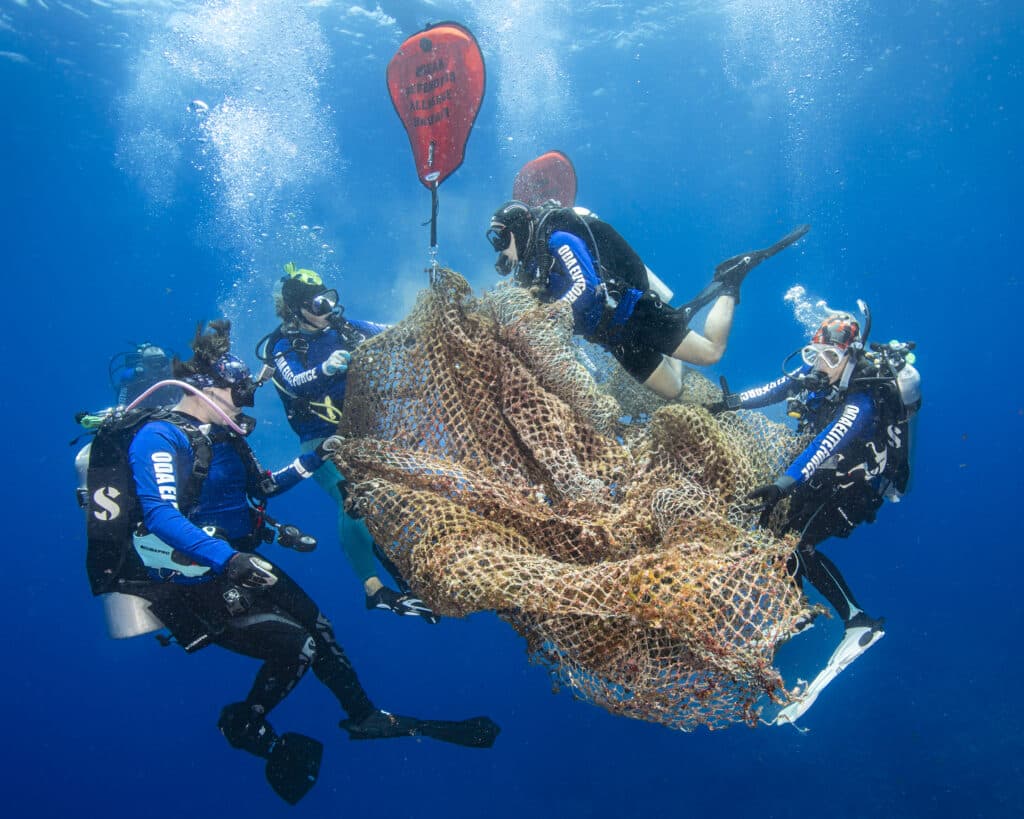
“This large discarded fishing net was found lying on the reef at about 30 meters in Kona, Hawaii,” Capozzola explained in an artist’s statement. “Volunteers from Ocean Defenders Alliance, also known as ODA, brought up this net by working closely together, using lift bags, and the net was then raised onto a boat provided by Kona Honu Divers. Earlier that day ODA had raised and extracted large volumes of fishing line (ultimately filling large buckets for removal) that had been snarled upon the reef.”
“Unfortunately, our ocean suffers from large amounts of debris, which can destroy reefs, entangle marine life, and release harmful chemicals,” Capozzola continued. “Many thanks to organizations such as ODA for helping to clean our ocean and preserve marine ecosystems for future generations.”
Second Place: Patrick Webster, USA, @underwaterpat
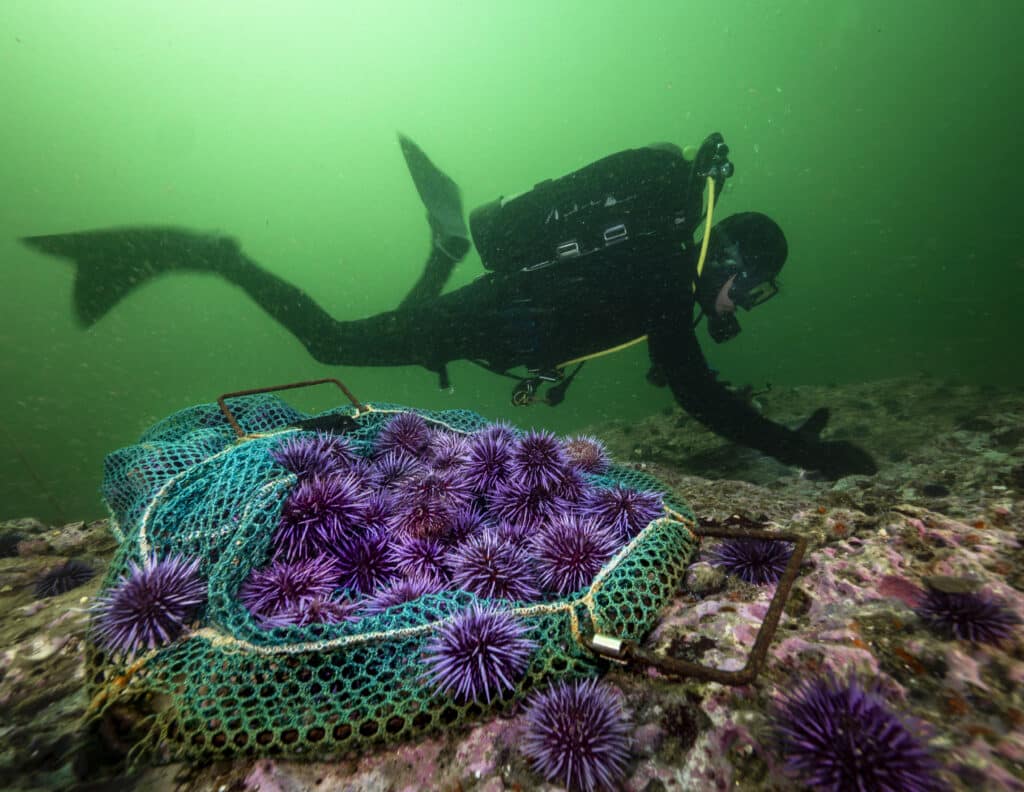
“Kelp restoration technician Andrew Kim removes purple sea urchins (Strongylocentrotus purpuratus) from an experimental site that will investigate whether divers can adequately defend and restore kelp forests devastated by warming oceans,” Webster said in a statement explaining the image. “Since 1980, kelp forests around Monterey Bay have declined in their canopy coverage by 90-some percent. Most recently, beginning in 2013, a ‘perfect ecological storm’ hit the kelp everywhere it hurts, stressing the forests and emboldening its grazers in the absence of their predators.”
“The disappearance of kelp up and down the coast has raised the alarm, rallying countless organizations and dedicated divers to try their chilly hands at becoming gardeners of the kelp forests,” Webster continued. “By playing sea otter, sunflower star and seaweed surrogate in their absence, these inspiring coastal caretakers are hoping to bolster the coastline and give it a fighting chance for a more resilient future ecosystem and community in the face of climate change.”
Third Place: “Guilding Fins” by Sina Ritter, Germany, @palms2peaks
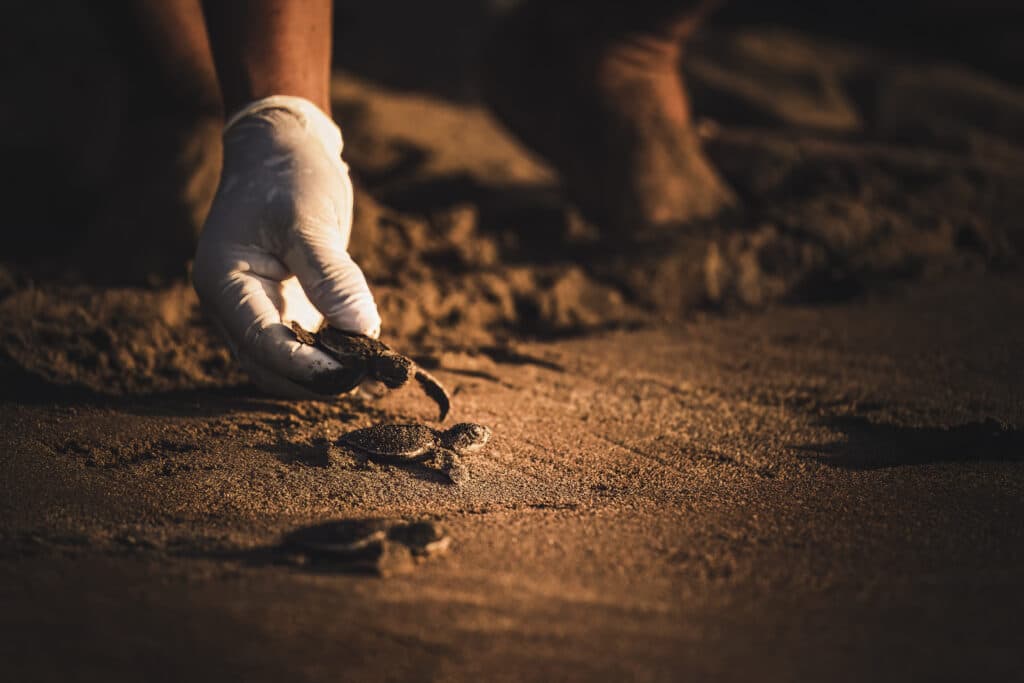
Ritter said the photo “captures a moving scene in Costa Rica where local conservationists tenderly release some hawksbill turtle hatchlings into the ocean.”
“This image brings us close to the gentle hands of a conservationist, carefully escorting these tiny, vulnerable creatures toward the vastness of the sea – their ultimate haven,” Ritter continued. “As these hatchlings navigate a world filled with predators and natural challenges, the image emphasizes the crucial role humans have in protecting our planet’s wildlife. It’s a vivid reminder of the delicate thread of life and how targeted conservation efforts can significantly boost the survival rates of these young turtles.”
Underwater Seascapes
First Place: “Cormorant Love” by Taryn Schulz, Canada, @tazdiving
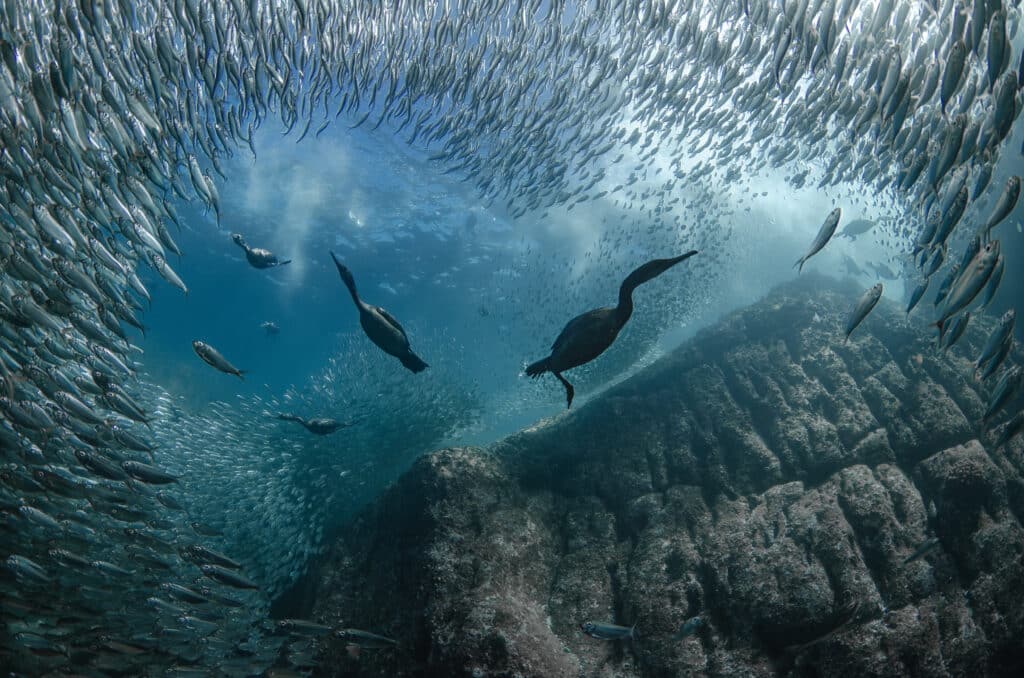
“This image was taken in Baja California at Isla Islotes, a location known for its sea lion colony. The day we dived here there happened to be a large amount of sardines taking refuge by the island, which became an exciting spectacle in the water with pelicans and cormorants like in this photo flying around and torpedoing themselves in the water,” Schulz said. “Moments before this shot the sardines were swimming very quickly, so I turned around as I knew something was coming and I was so happy to capture the heart shape of the sardines as they fled from the cormorants.”
Second Place: Daniel Sly, Australia, @daniel.sly
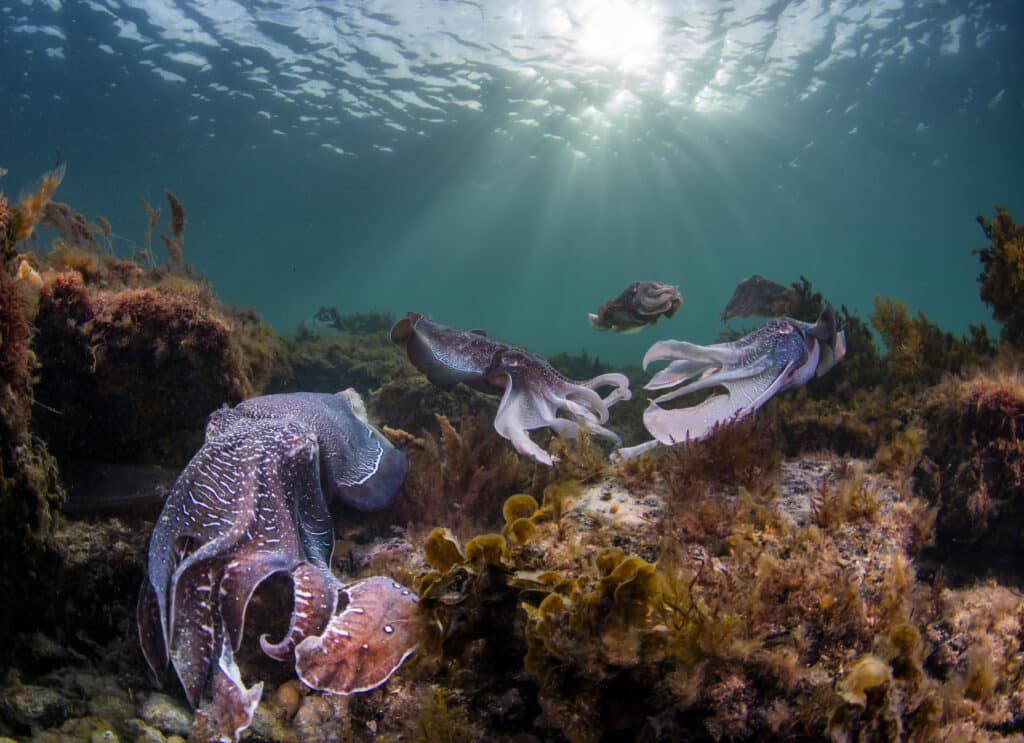
“During the winter months, hundreds of thousands of giant cuttlefish (Sepia Apama) aggregate in the shallow waters of the upper Spencer Gulf in South Australia,” Sly explained in a statement. “The cuttlefish arrive here with just one thing on their minds: mating!”
“The gathering of these cuttlefish is skewed towards the males of the species at a ratio of around eight to one, so competition for the limited numbers of females can be fierce,” Sly said further. “In the foreground of this image, a large male has completely engulfed a smaller female with its arms, while in the background, several other sets of males can be seen challenging one another for the opportunity to mate with the nearby female.”
Third Place: “Mobula Dance” by Vanessa Mignon, Australia, @seacologynz.irene
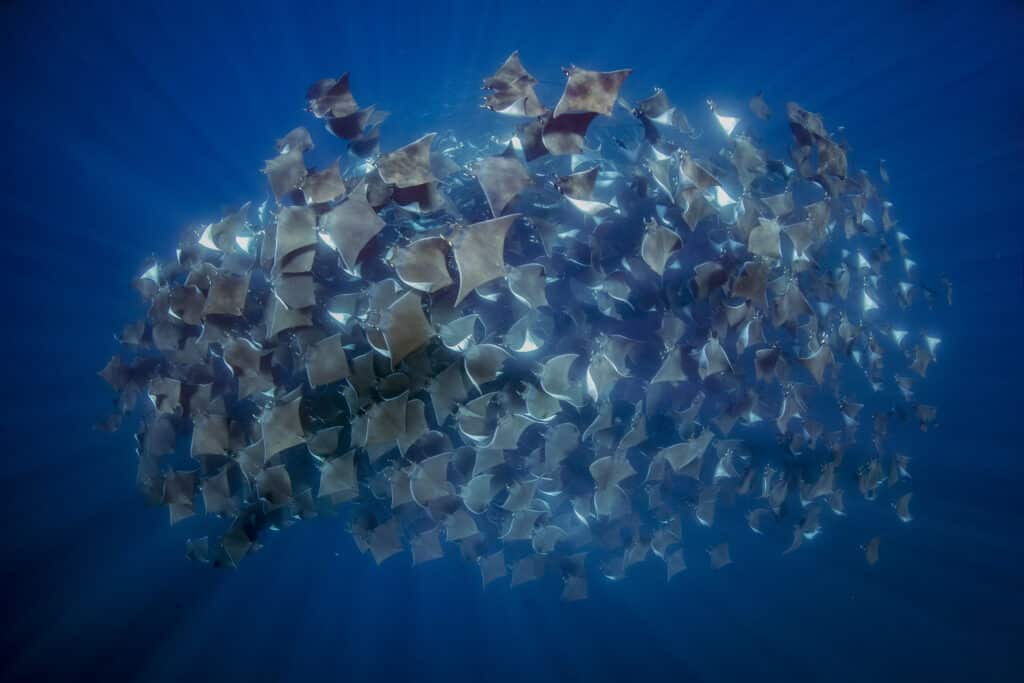
To capture this image, Mignon “travelled to Baja California hoping to witness the Mobula munkiana aggregation.”
“One day we found a vortex of them in deep, blue waters,” Mignon said. “They were circling and swimming in union. It felt like a beautiful, hypnotic dance. Seeing such big aggregations can lead [one] to think that their populations are doing well. Unfortunately Mobula munkiana are listed as vulnerable on the IUCN red list.”
Small Island Developing States
First Place: Andrea Marandino, Brazil, @amarandino
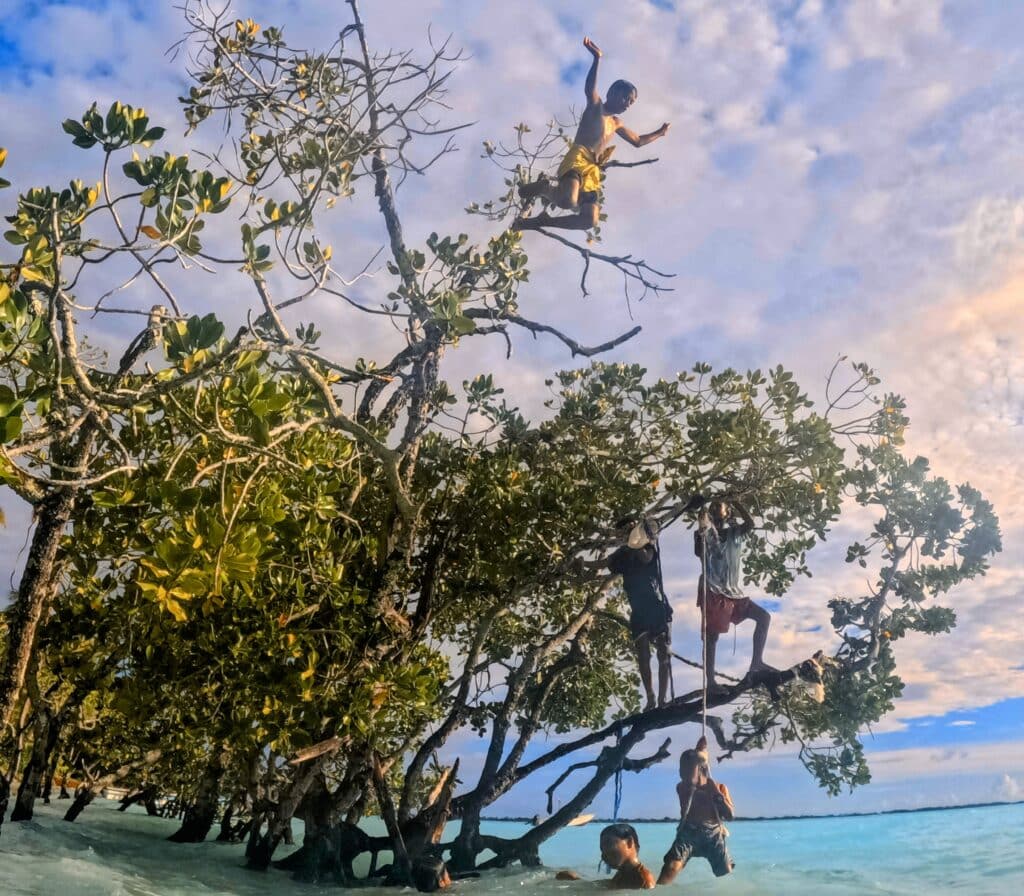
This “Image was taken in Abatao, North Tarawa, Kiribati,” Marandino said. “The children of Kiribati have a close relationship to the ocean and play in the water from a young age. Tarawa, the capital of Kiribati, is a narrow strip of land that lies between the Pacific and an enormous lagoon that depends on a freshwater lens. The kids are always smiling and happily interact with the few visitors, but their future is uncertain. Kiribati’s coral atolls are very low-lying, with a maximum elevation of 3 to 4 meters above sea level, making it one of the countries most threatened by climate change.”
Second Place: Andrea Marandino, Brazil, @amarandino
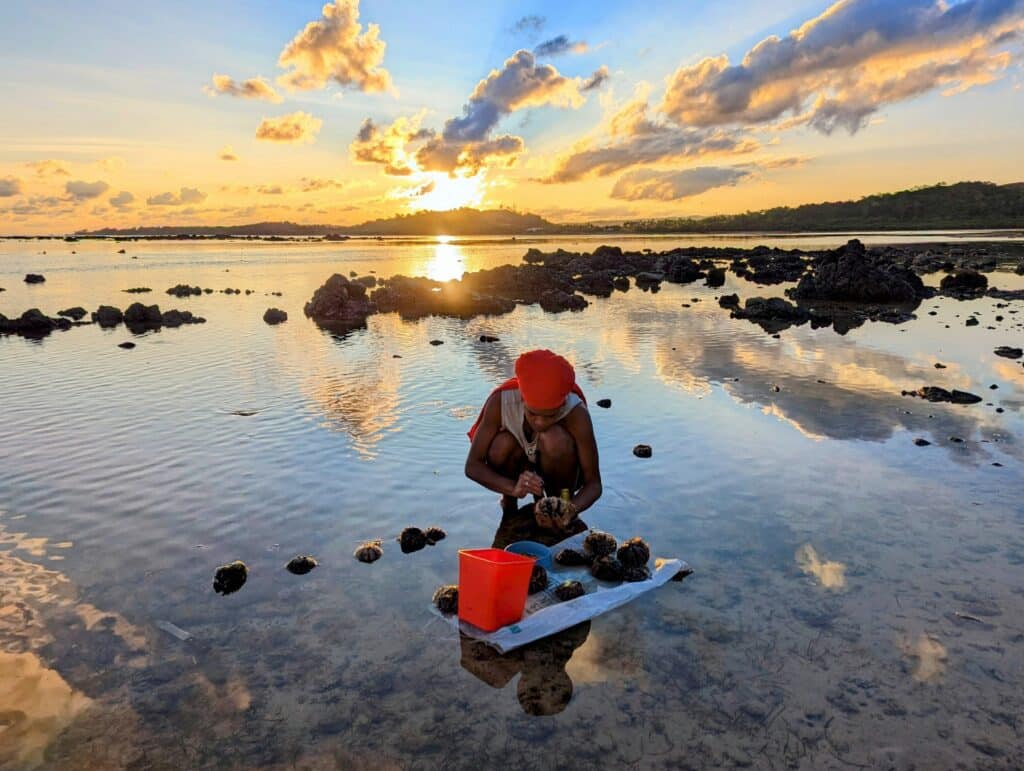
The “Image was taken in the village of Korotongo, on the southern coast of Viti Levu, Fiji,” Marandino explained. “The lady in the photo, Mele, was catching sea urchins with two cousins – something they do regularly together for their own consumption. She would open the sea urchins to extract the edible part, mixing them in a bucket with lemon and chilli. They invited me to join (classic Fijian hospitality) and we ate them fresh on the beach, with bread fruit on the side. Delicious, and one of my favourite memories of Fiji.”
Third Place: Stuart Chape, Australia
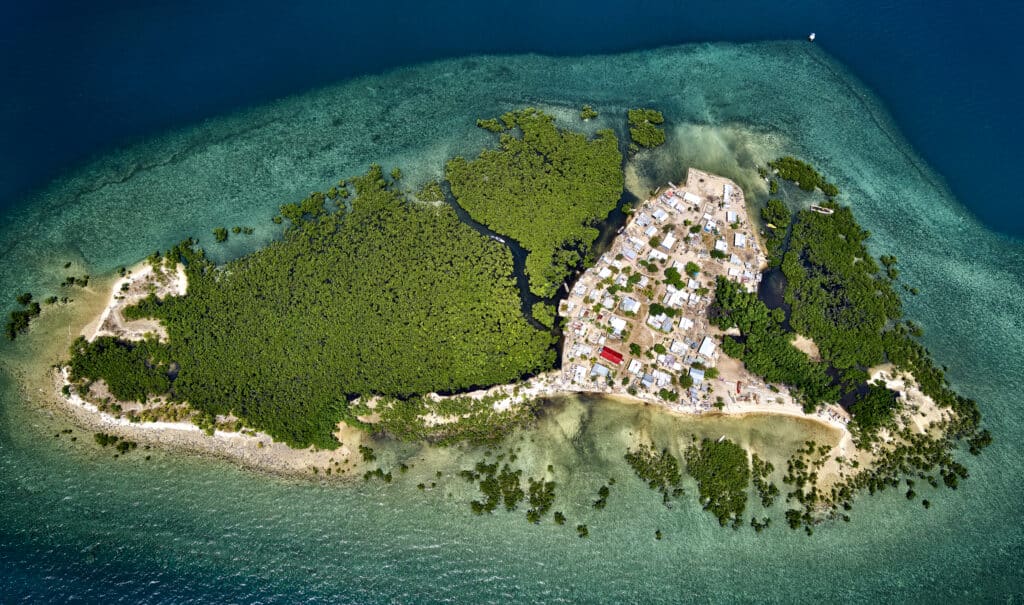
“Coastal village, Solomon Islands. The large village of Haghalu is located on the south coast of Ngela Sule island in Central Province of the Solomon Islands,” Chape said. “The elevation of the village ranges from 1-5 metres above sea-level and is surrounded by coral reefs and deeper sea that support village livelihoods and food security by providing marine resources. Like all Pacific islands coastal villages Haghalu is vulnerable to climate change[,] particularly rising seas and extreme weather events.”
Big and Small Underwater Faces
First Place: Mathieu Macias, France, @imaginairnsea
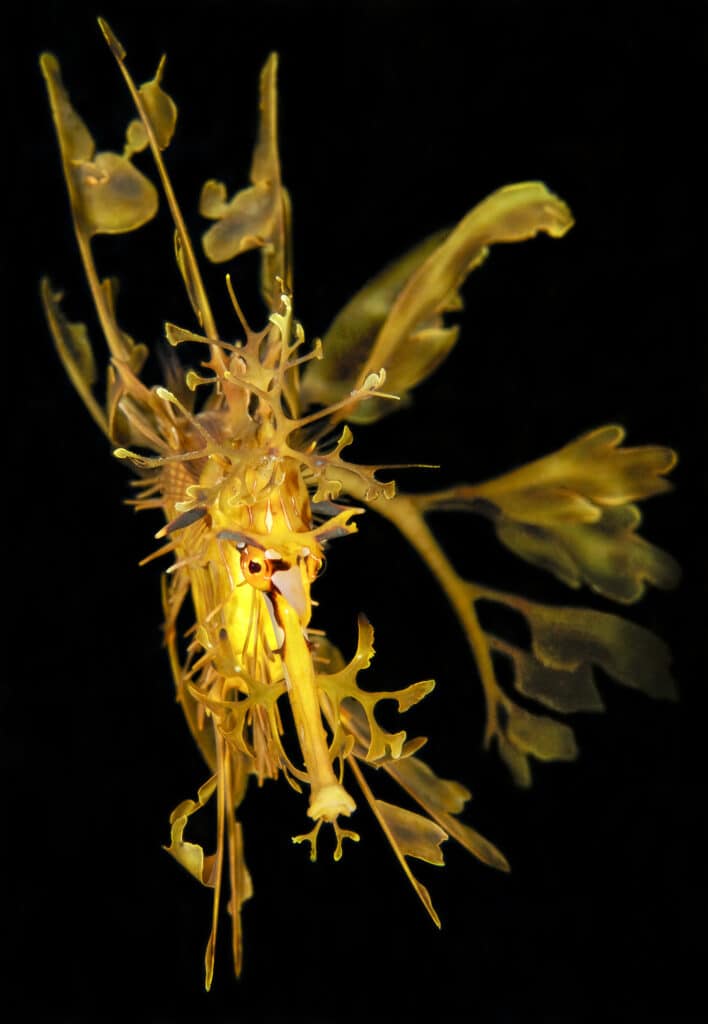
“This photograph is a portrait of a leafy sea dragon taken in Rapid Bay, South Australia, where it is endemic,” Macias said in a statement. “I was absolutely charmed by this creature as soon as I saw it for the first time in the first photo and it became a dream for me to meet one. Although the first try was a failure, I decided to come back a few months later and my dream came true. I was so happy to meet this animal that is so cute and almost unreal, with its amazing ability to camouflage itself. Its shyness [] was a big challenge in making this portrait, but I am delighted with the result.”
Second Place: George Kuowei Kao, @george_kao_uwphotographer
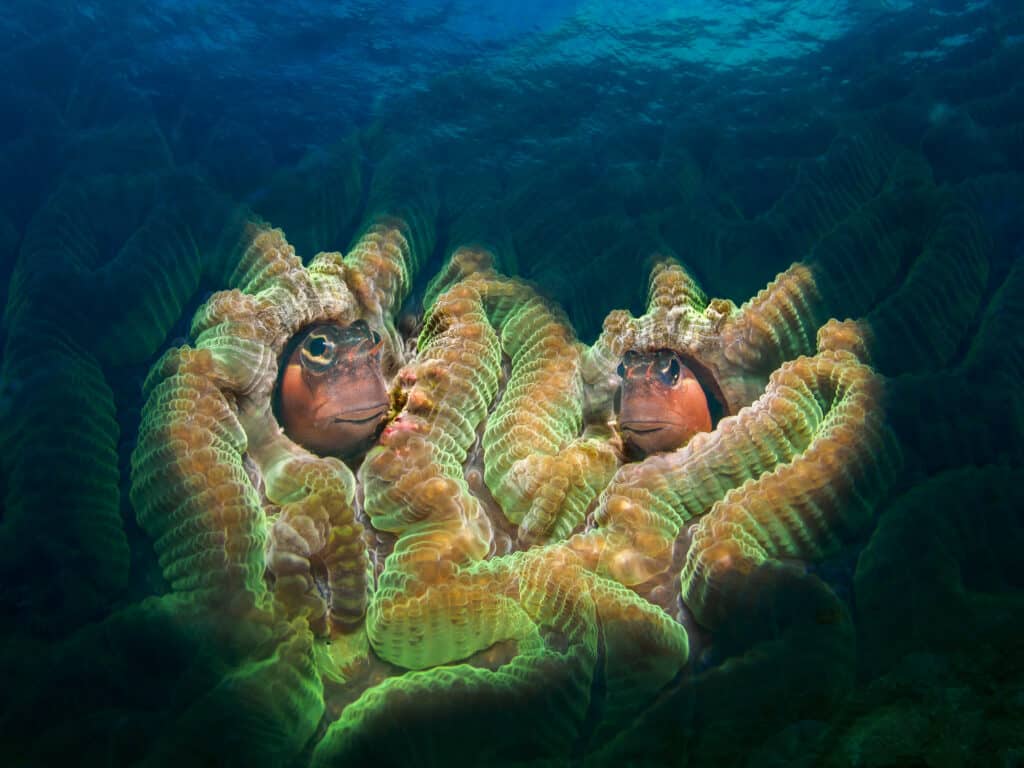
“A dive revealed a hard coral hosting blennies, whose charm rivaled groundhogs, through my new lens,” Kao explained of the image. “As I captured their likeness, creativity spurred me to push the scene’s boundaries. Employing a snoot, I orchestrated a dramatic, overexposed standoff between two blennies. Jason, my guide, with a heart-shaped gesture, turned a shared look into a shared vision. This photo, a fusion of spontaneous nature and a flash of inspiration, is the fruit of that dive.”
Third Place: Irene Middleton, New Zealand, @seacologynz.irene
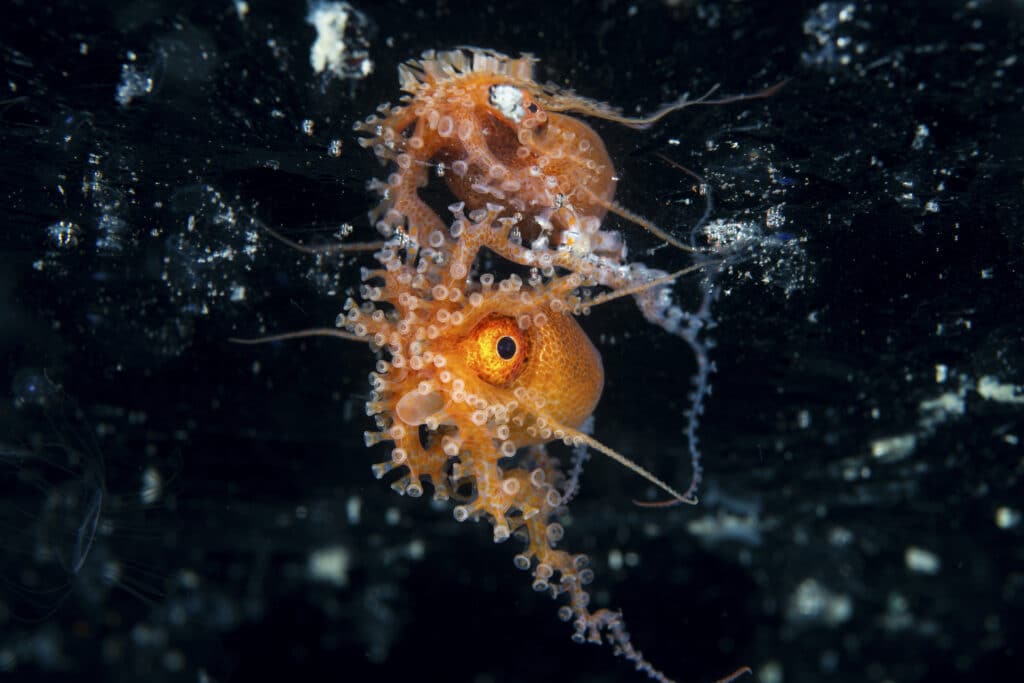
“This is a Juvenile Football Octopus (Ocythoe tuberculata), a pelagic octopus species that usually lives in mid water around 200m depth where they are the favourite prey of lancetfishes and rissos dolphins,” Middleton said. “The juveniles are occasionally encountered near the surface, where they often use large salps as protection. I saw a handful in salps on this day at the Poor Knights Islands off New Zealand’s northeastern coast, but this was the only free swimming juvenile I encountered.”
Above Water Seascapes
First Place: Michael Sswat, Germany, @m_sswat
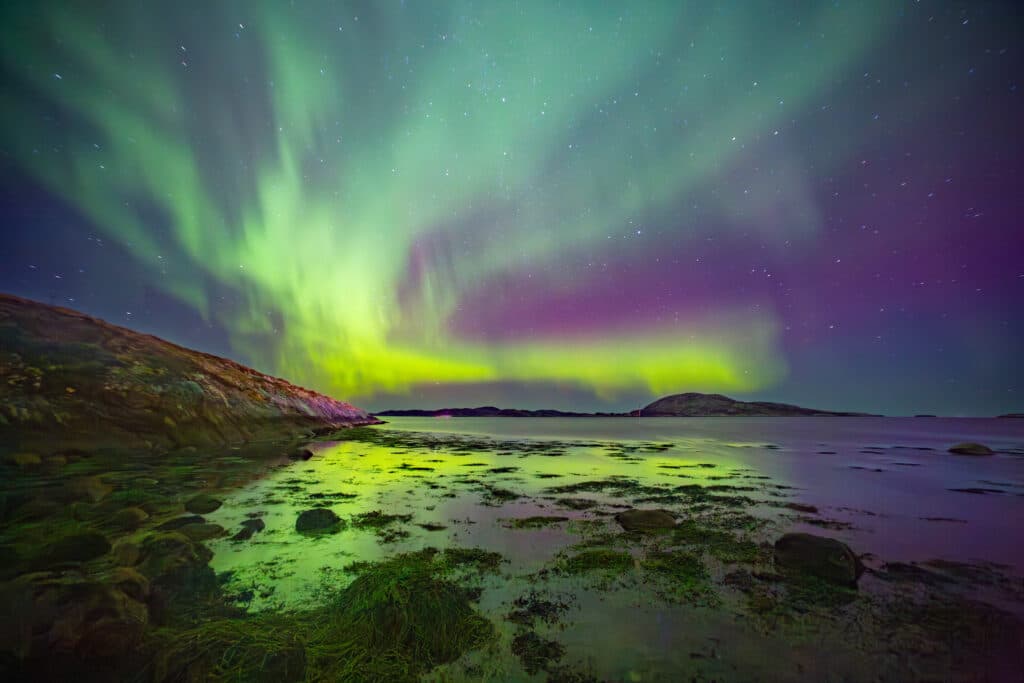
“Sitting at the rocky shore in Norway watching northern lights and their reflection in the sea surface with friends – what more do you want?!” Sswat asked. “In this case, we even had more beautiful nature to experience, as earlier in the day, we were diving through canyons into incredible kelp forests meeting lobsters and nudibranchs, in the Namsfjord, off the village of Utvørda, north of Trondheim (Norway). (No more wishes).”
Second Place: Emmett Sparling, Canada, @emmett_sparling
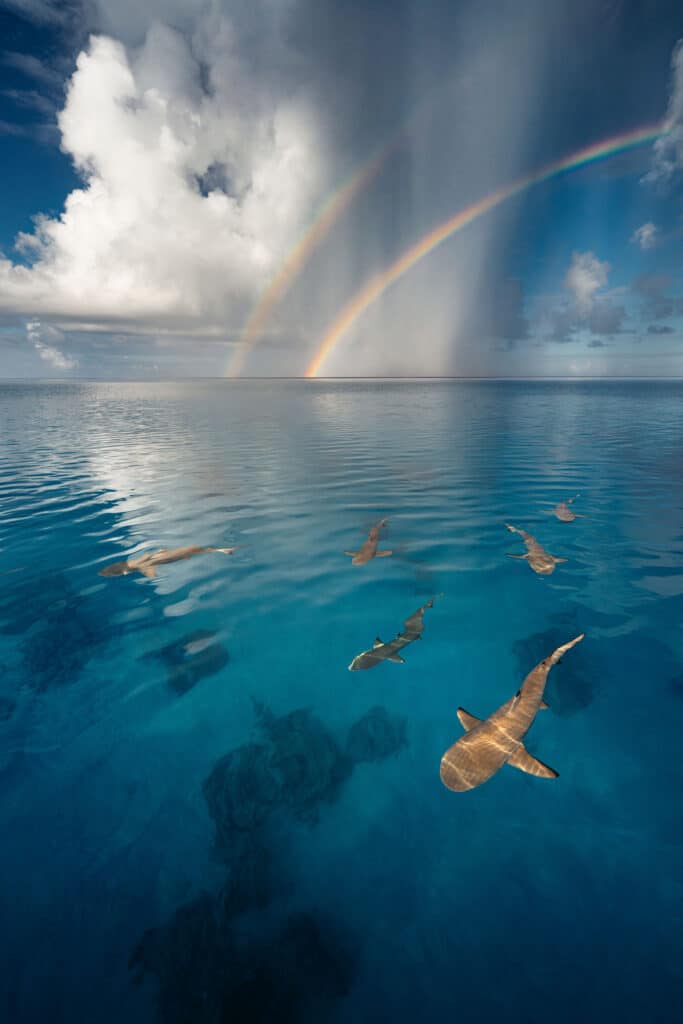
“On our first night in the Tuamotus (French Polynesia), we stopped in Tahanea – an uninhabited atoll deep in this stunning archipelago,” Sparling said in a statement. “We had a perfectly windless evening where the ocean turned to glass. The next morning, the water was still glassy and a group of black tip reef sharks patrolled the waters around our boat. Rainbows and sharks are common subjects in the Tuamotus, two things I’ll never get used to.”
Third Place: Romeo Bodolai, Hungary, @romeo.bodolai
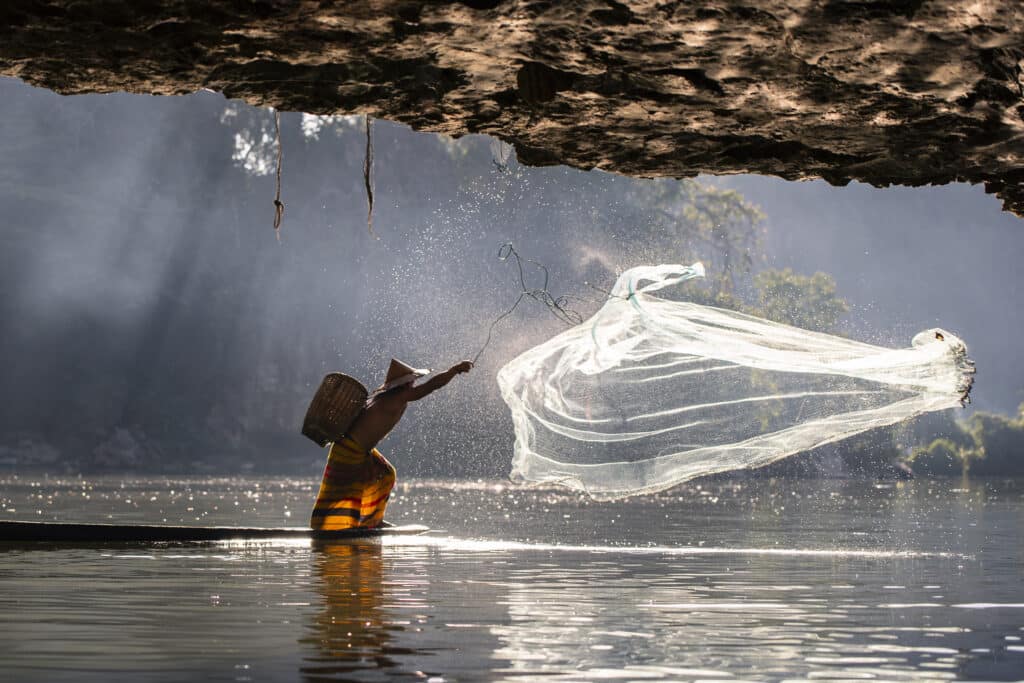
“A fisherman tries to catch the daily food for his family using a traditional technique in Myanmar,” Bodolai explained. “The picture was taken on the lake Inle in 2019. I was lucky with the nice warm lights which give a nice extra touch, a glory to this beautiful moment.”
Olivia is a freelance writer and reporter with a decade’s worth of experience. She has been contributing to EcoWatch daily since 2018 and has also covered environmental themes for Treehugger, The Trouble, YES! Magazine and Real Life. Her Real Life essay “Breaking the Waves” — about the eerily neat aesthetics of climate change projection graphics — was chosen to appear in the published anthology What Future 2018 from Unnamed Press.
Cristen is a writer of fiction and nonfiction. She holds a JD and an Ocean & Coastal Law Certificate from University of Oregon School of Law and an MA in Creative Writing from Birkbeck, University of London. She is the author of the short story collection The Smallest of Entryways, as well as the travel biography, Ernest’s Way: An International Journey Through Hemingway’s Life.
- SEO Powered Content & PR Distribution. Get Amplified Today.
- PlatoData.Network Vertical Generative Ai. Empower Yourself. Access Here.
- PlatoAiStream. Web3 Intelligence. Knowledge Amplified. Access Here.
- PlatoESG. Carbon, CleanTech, Energy, Environment, Solar, Waste Management. Access Here.
- PlatoHealth. Biotech and Clinical Trials Intelligence. Access Here.
- Source: https://www.ecowatch.com/united-nations-world-oceans-day-photo-contest-2024.html
